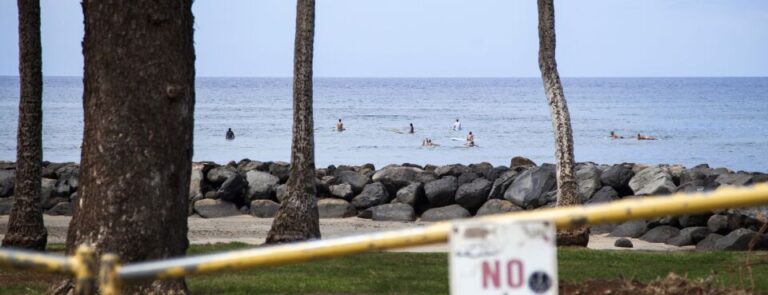Bloomberg Law | April 23, 2020
By Greg Stohr
The U.S. Supreme Court gave environmentalists a partial win on the scope of the Clean Water Act, ruling that the law applies to some pollution discharges that don’t go directly into a major body of water.
The 6-3 decision Thursday told a federal appeals court to reconsider its conclusion that a Hawaii water-treatment facility violated the law with wastewater discharges that travel underground a half mile to the Pacific Ocean. But the high court majority set a standard that will give environmental advocates another chance to win the case, as well as other suits claiming illegal water pollution.
The ruling could affect mines, coal-fired power plants and large-scale animal feeding operations as they seek to limit federal regulatory scrutiny and avoid environmental suits. The majority rejected calls from business groups and President Donald Trump’s administration to significantly scale back the water law.
Writing for the court, Justice Stephen Breyer said the law requires a federal permit for any “functional equivalent of a direct discharge” into a river, ocean or other major waterway. He said that would include discharges that travel only a “few feet” underground or over a beach, and he listed seven factors for courts to consider in particular cases.
Breyer said the “functional equivalent” standard “best captures, in broad terms, those circumstances in which Congress intended to require a federal permit.” Chief Justice John Roberts and Justice Brett Kavanaugh joined the court’s liberals in the majority.
Trump Stance
Justices Clarence Thomas, Neil Gorsuch and Samuel Alito dissented. Alito said the court “makes up a rule that provides no clear guidance and invites arbitrary and inconsistent application.” He added, “Judges will be left at sea.”
The Trump administration argued that the Clean Water Act doesn’t cover discharges that travel through groundwater before reaching their destination. The administration said groundwater is primarily regulated by state laws and other federal statutes, including the Safe Drinking Water Act.
Breyer said the administration’s approach “would open a loophole allowing easy evasion of the statutory provision’s basic purposes.”
Environmental advocates claimed victory. David Henkin, a lawyer with Earthjustice and the lead attorney pressing the case against Maui County, said he expects the sewage facility eventually will be required to get a permit.
“This decision is a huge victory for clean water,” Henkin said in a statement. “The Supreme Court has rejected the Trump administration’s effort to blow a big hole in the Clean Water Act’s protections for rivers, lakes, and oceans.”
The EPA said in a statement that the ruling “unfortunately leaves some uncertainty for the public, including private property owners.”
Michael Kimberly, a Washington lawyer who filed a brief backing Maui County on behalf of agricultural trade groups, called the new standard “amorphous.” He said in a statement that the ruling “leaves countless responsible landowners potentially liable for discharges” that don’t violate the law.
Coral Reef
The fight focused on the meaning of a commonplace word — “from.” The Clean Water Act requires a permit for discharges into a major body of water “from any point source,” which the law defines to be a specific conveyance such as a pipe, ditch or well.
The Hawaii treatment facility, three miles north of the town of Lahaina, on the island of Maui, releases 3 million to 5 million gallons of treated water a day into four underground pipes, known as injection control wells. The discharged fluid then mixes into the groundwater. Environmental groups led by the Hawaii Wildlife Fund sued the county in 2012.
A federal-state study using dye showed that much of the water reaches the Pacific through small fissures in the ocean floor.
Environmental groups say decades of discharges have devastated a once-pristine coral reef off nearby Kahekili Beach. The groups say nutrients in the discharges have stimulated the growth of algae that smother the coral by blocking photosynthesis.
The county says it sent an expert to the beach in 2014 and found no evidence the reef had suffered any damage.
The case is County of Maui v. Hawaii Wildlife Fund, 18-260.
(Updates with EPA reaction in 11th paragraph)
To contact the reporter on this story:
Greg Stohr in Washington at gstohr@bloomberg.net
To contact the editors responsible for this story:
Joe Sobczyk at jsobczyk@bloomberg.net
Laurie Asséo, Ros Krasny
© 2020 Bloomberg L.P. All rights reserved. Used with permission.
Original Post: https://news.bloomberglaw.com/environment-and-energy/supreme-court-issues-mixed-ruling-on-reach-of-clean-water-act

